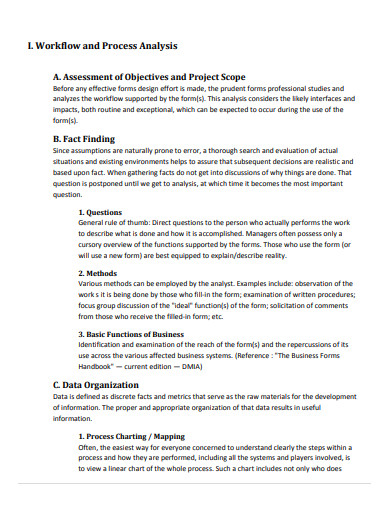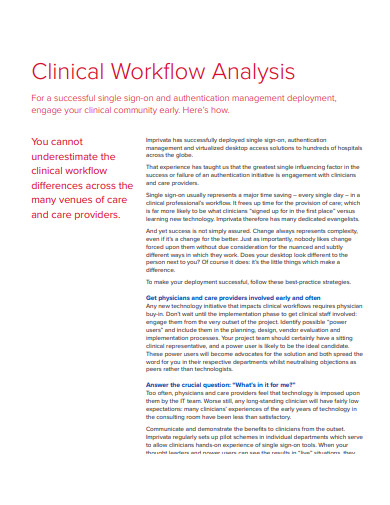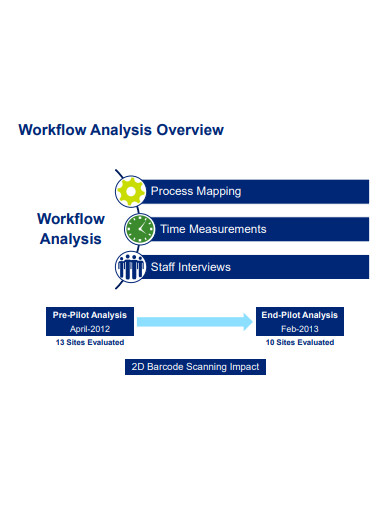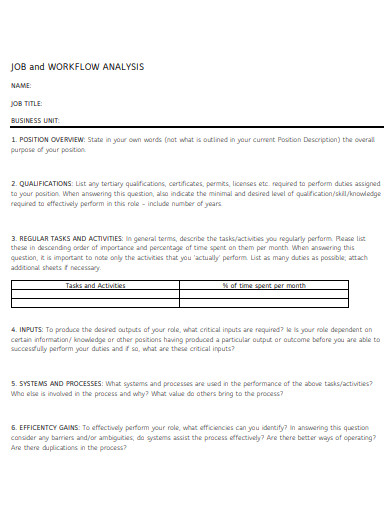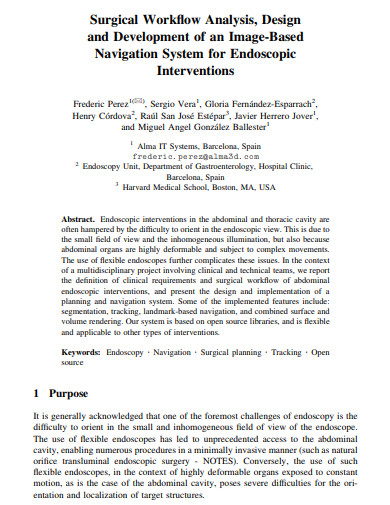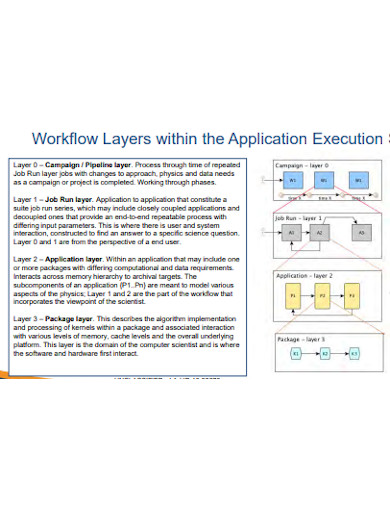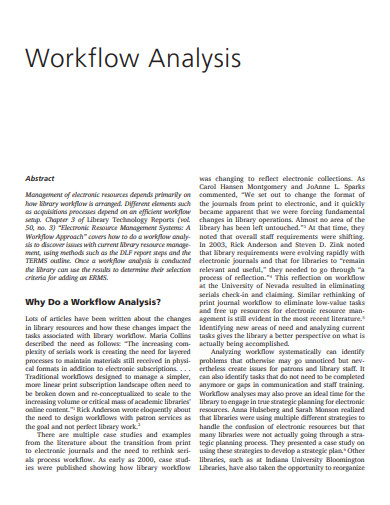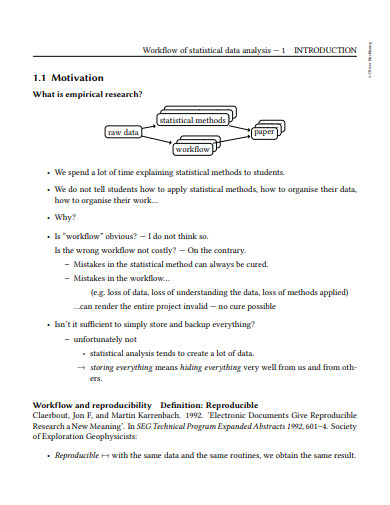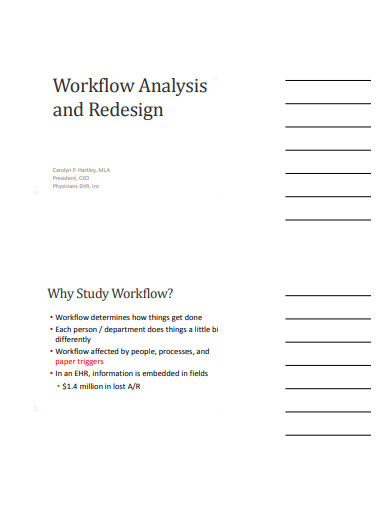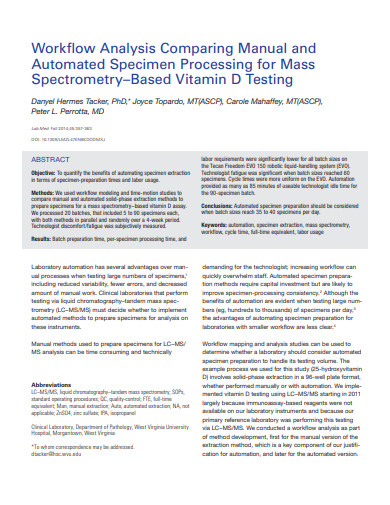Optimizing workflows allows a company to make better use of its assets, particularly in processes where one team must hand off work to another. A common form of constraint that workflow analysis might detect is one in which one team is frequently waiting for work from another team. Another instance in which workflow analysis can increase efficiency is when employees execute needless tasks, such as in defined procedures with several steps.
10+ Workflow Analysis Samples
A process is a method for attaining a recurring goal. It isn’t a task, which is a one-time action rather than a process that may be repeated. A workflow is not a collection of unrelated jobs, which is more correctly described as a project. A workflow is a group of tasks that are completed in a regular order. Rather of just stating the phases in the workflow process, business analysts typically show a workflow graphically. Workflow management software normally handles the creation and documentation of these diagrams depending on user input. A graphic representation of the workflow makes it easier to visualize business operations, which may be very useful for assessing and optimizing the workflow.
1. Workflow Analysis
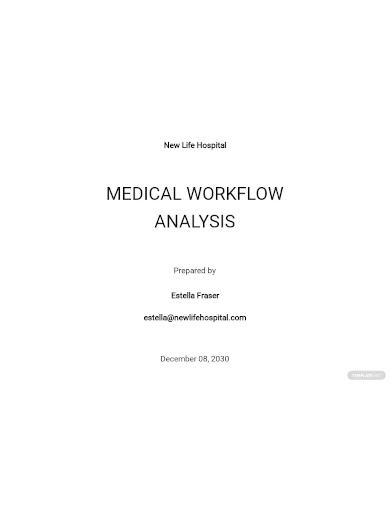
2. Workflow and Process Analysis
3. Clinical Workflow Analysis
4. Sample Workflow Analysis
5. Job and Workflow Analysis
6. Surgical Workflow Analysis
7. Simple Workflow Analysis
8. Workflow Analysis Example
9. Workflow Statastical Data Analysis
10. Basic Workflow Analysis
11. Printable Workflow Analysis
Workflow Analysis Steps
Although certain modifications will have a greater impact than others, organizations should thoroughly examine all of their workflows. The essential tasks that create money for a corporation should be prioritized first, with support services being examined later. The ideal order for analyzing jobs varies greatly depending on the industry.
What do we do?
Providing an answer to the inquiry “What do we do?” From the beginning to the finish of income production, ” includes recognizing your organization’s primary functions. Depending on the industry, the order in which these duties are completed can vary substantially between firms.
How do we do it?
“How do we do it?” asks the query. Identify each phase in your workflow. It’s critical to be thorough at this point because a seemingly insignificant step can have a significant impact on workflow efficiency.
Why do we do it?
“Why do we do it?” is a valid question. ” may assist you figure out if each action is necessary. If you don’t know the answer to this question, it’s possible that the step is pointless and a waste of time. Steps that do not add value to a process are likely to be removed. These procedures frequently include the production and keeping of records that have little to do with revenue generation.
What does each departments do?
Because practically all processes include passing work from one department to another, workflow analysis also necessitates determining what each department in your business accomplishes. Consider a manufacturing company: a customer places an order with a salesperson, who then transmits the order to the warehouse. Warehouse employees fill the order from inventories and prepare it for transportation. They deliver the order to the shipping department, which finally delivers it to the consumer. Intra-departmental operations are also included in this pipeline, such as the sales department telling the accounting department of the order, which would subsequently collect payment.
FAQs
Why should you perform workflow analysis?
Workflow analysis allows you to more precisely assess your workflows and discover pain points and bottlenecks, allowing each workflow to run at maximum efficiency. With the appropriate technique, workflow analysis may help you not only identify problem areas, but also determine the core cause of the difficulties that are causing your workflows to be inefficient.
How do you discover real usability issues with your workflows?
It’s vital to communicate with real consumers to receive input on real usability concerns with your workflows. This is especially true in the early phases of workflow automation: getting individuals to embrace new methods of doing things or change their existing habit is exceedingly challenging.
One of the simplest methods to make your operations more productive is to use workflow management software. It allocates an employee to the next task when each one is completed, reducing the need for them to communicate with one another to choose which duties they will undertake. Employees can spend more time creating genuine value for their company because of this benefit.
Related Posts
FREE 10+ Fishbone Root Cause Analysis Samples in PDF
FREE 11+ Cost Volume Profit Analysis Samples & Templates in PDF | MS Word
FREE 6+ Corporate Portfolio Analysis Samples in PDF
FREE 10+ Fault Tree Analysis Samples in PDF
FREE 10+ Comp Analysis Samples in PDF
FREE 10+ Fishbone Analysis Samples in PDF
FREE 10+ Individual Swot Analysis Samples in PDF
FREE 10+ 5 Year Analysis Samples in PDF
FREE 10+ Benefit Costs Analysis Samples in PDF
FREE 10+ Job Hazard Analysis Samples in PDF
FREE 10+ Primary Source Analysis Samples in PDF
FREE 10+ Critical Path Analysis Samples in PDF
FREE 10+ Competition Analysis Samples in PDF
FREE 10+ Activity Hazard Analysis Samples in PDF
FREE 10+ Risk Benefit Analysis Samples in PDF

